
ECE Undergraduate Programs
ECE Projects Awarded Over $1.85M in NSERC Alliance Grants
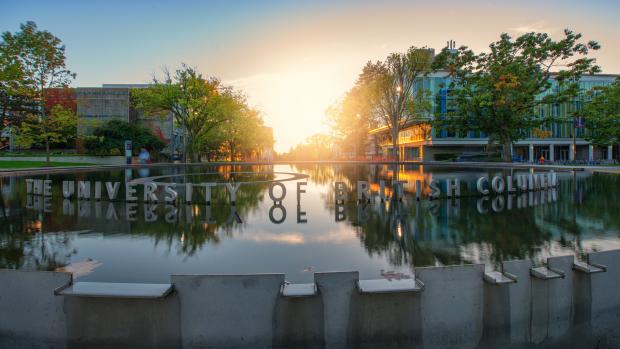
Four research projects led by UBC Electrical and Computer Engineering researchers have collectively been awarded over $1.85 million in Alliance grants from the Natural Sciences and Engineering Research Council of Canada’s (NSERC), the Government of Canada announced today.
Launched in April 2019, the Alliance grants program aims to “generate new knowledge and accelerate the application of research results to create benefits for Canada” by supporting research projects led by “strong, complementary, collaborative teams” of university researchers and partner organizations from the private, public or not-for-profit sectors. By doing so, the program also aims to “contribute to Canada’s long-term competitiveness; support public policy; and train new researchers in areas that are important to Canada and to the partner organizations.”
“Our Government remains committed to supporting Canada’s researchers as part of our vision for science,” said the Honourable François-Philippe Champagne, Minister of Innovation, Science and Industry. “With the Alliance grants program, our government is helping to bring together the full range of Canada’s expertise across sectors and enabling the development of new opportunities that will help turn promising research into real benefits for Canadians.”
Twenty-seven UBC projects have been awarded a total of $6.6 million in Alliance grant funding from NSERC between April 2019 and December 31, 2020. For a full list of these projects, please see the announcement on the UBC Research + Innovation website.
The UBC Electrical and Computer Engineering-led projects are:
Purang Abolmaesumi
Next-generation of non-destructive testing of composites using advanced ultrasound imaging
Partner: Boeing Company
NSERC Funding: $41,904
Christine Chen
Integrated Design and Operation of Efficient and Resilient Shipboard Electric Power Systems
Partner: ABB Inc., Canadian Coast Guard, Corvus Energy Ltd., Royal Canadian Navy, Vard Electro Canada, Vard Marine Inc.
NSERC Funding: $813,334
Andre Ivanov
ML-Based Techniques for Physical Design Automation of SoCs
Partner: Huawei Technologies Canada Co., Ltd.
NSERC Funding: $90,000
Peyman Servati
Green roll-to-roll manufacturing of low-cost, high-performance large-area flexible electronics
Partner: TF Massif
NSERC Funding: $908,820
Dr. Ali Mesbah Receives Killam Accelerator Research Fellowship
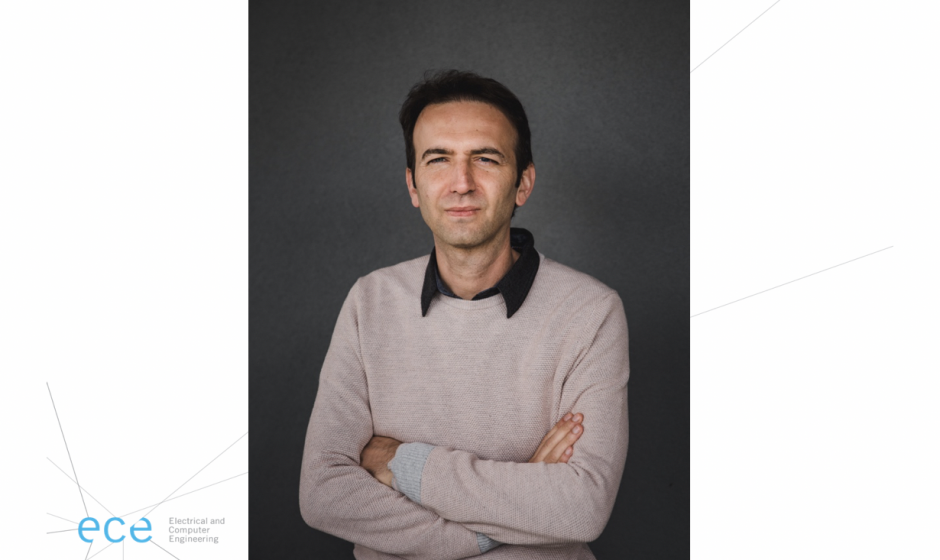
We are excited to announce that Dr. Ali Mesbah is one of the six recipients of the inaugural Killam Accelerator Research Fellowships this year!
Dr. Mesbah will be recognized at an annual event in May 2021 and will deliver a public lecture within the two-year term of the fellowship. These awards recognize exceptional early-career researchers at the Vancouver and Okanagan campuses who have demonstrated outstanding research achievement and the potential for significant impact in their fields of scholarship. The Killam Accelerator Research Fellowship program is established through a bequest from the late Dorothy J. Killam, and strengthens UBC’s support for early-career researchers who are ready to launch the next stage of their careers. Offered on a competitive basis, up to six awards will be made annually through the Izaak Walton Killam Memorial Fund.
Dr. Mesbah’s main area of research is software engineering, with an emphasis on software analysis and testing, software maintenance and evolution, fault localization and automated repair, and program comprehension.
To learn more about Dr. Mesbah and the Killam Accelerator Research Fellowships please visit: https://research.ubc.ca/karf-2020-recipients
Former Nuclear Bunker Now Hosts Life-saving Research
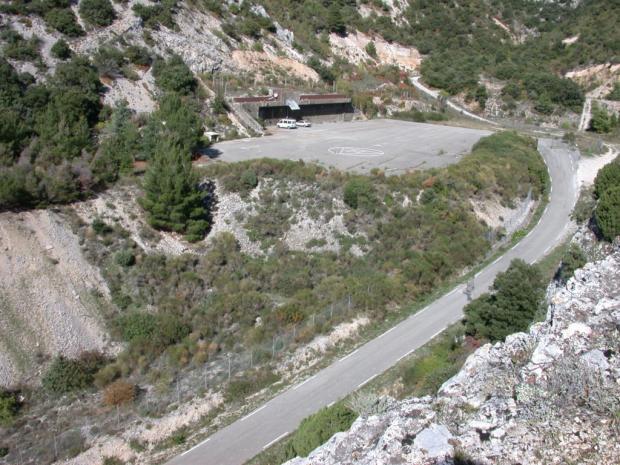
New agreement between UBC and French subterranean lab boosts scientific collaboration
A Cold War-era nuclear bunker buried 500 metres below the countryside in southern France hums with new life today as an epicentre of vital research in science and technology. The facility, built in the 1960s to house the nuclear command centre of the French air force, was decommissioned in the late 1990s and converted into a unique research lab that now draws scientists from around the world, including researchers from UBC. Its main attraction is a magnetically shielded, vibration-proof research chamber fortified by a two-metre thick wall of reinforced concrete and steel—ideal for highly complex, delicate experiments, particularly those involving electromagnetic waves. Known as the Laboratoire Souterrain à Bas Bruit (LSBB), the lab is located deep in the Luberon Regional Natural Park, more than 20 kilometres away from heavy industry, major traffic routes, and other sources of mechanical and acoustic noise and pollution.
“The LSBB lies in the heart of one of the last areas of great electromagnetic calm, providing scientists with one of the quietest underground laboratories in the world,” says Dr. Stéphane Gaffet, director of LSBB.
UBC Electrical and Computer Engineering researchers like Dr. Guy Dumont and Dr. Matthew Yedlin have done some of their work at the lab, which is operated by the French National Centre for Scientific Research (CNRS) and Avignon University.
Brainwaves and climate change
Dr. Dumont, a UBC professor of electrical and computer engineering, studies the brain’s electrical activity. He’s particularly interested in gamma waves, which are associated with large brain network activity and are linked to various cognitive processes, pain perception, and certain pathologies like depression and even autism. He is using the lab for experiments in measuring brainwaves and testing EEG equipment. “The EEG results we got were mind-blowing. We’d never been able to obtain such clean EEGs in a hospital setting.” Dr. Dumont has developed a novel EEG approach that he will be testing further at the lab once COVID-19 restrictions ease up.
Dr. Yedlin, an associate professor of electrical and computer engineering at UBC, is leading a project that takes advantage of the lab’s underground location to study the impact of climate change using variations in the water table. This research started in 2007 and uses a special ultra-wideband antenna developed at the University Côte d’Azur (formerly University Nice Sophia Antipolis), that can penetrate the subsoil and produce clear images, including the presence of water.
“I’m excited by the possibilities of expanding this work, together with my colleagues in our interdisciplinary team of geophysicists, electrical engineers and hydrologists,” said Dr. Yedlin.
New collaboration agreement
UBC’s connection to the LSBB goes back more than 15 years. Today, a new agreement signed by UBC, CNRS and three associated French universities (Avignon University, University Côte d’Azur and University of Pau and the Adour Region) formalizes the relationship and deepens the collaboration.
The agreement creates the Maxwell-Berger Underground Research Laboratory, which will focus on strengthening existing joint research on: radar imaging of complex environments, understanding the hydrodynamic processes associated with groundwater resources, seismic metrology using MEMS (Micro-Electro-Mechanical Systems) and NEMS (Nano-Electro-Mechanical) technologies, and implementation of an international experimental platform for broadband high-sensitivity EEG for the study of neurodegenerative diseases and neurological conditions.
The lab is named after James Clerk Maxwell, a 19th century physicist whose work predicted the existence of electromagnetic waves, and Hans Berger, a German neurologist who is considered the father of electroencephalography.
“Together with UBC in Vancouver and our three partner French universities in Avignon, Nice and Pau, we are happy to officially launch an ambitious interdisciplinary research project, the Maxwell-Berger Low-Noise Underground Research Laboratory, which brings together medical science and geophysics, based on activity of brain and Earth which is measurable through electrical and electromagnetic fields. I am glad to see that the scientific dynamism of CNRS’s research teams is generating international collaboration and developing potential applications with a prestigious university,” says Dr. Antoine Petit, chairman and chief executive officer at CNRS.
“International collaboration is more important than ever—both now and once the COVID-19 pandemic is over. UBC’s new global engagement strategy emphasizes multi-stakeholder partnerships to address issues of global relevance, and French institutions like CNRS are an important part of this. The Maxwell-Berger Low-Noise Underground Research Laboratory represents another milestone in this relationship, and I congratulate everyone who worked to make it happen,” says Prof. Santa J. Ono, UBC president and vice-chancellor.
“Today’s event highlights the long-lasting collaboration between UBC and the Embassy of France in Canada that contributes to the implementation of numerous scientific partnerships and student mobility programs,” said Mr. Philippe Sutter, consul general of France.
About the UBC-CNRS collaboration
Canada has strong relationships with the French National Centre for Scientific Research (CNRS). CNRS’s presence in Canada includes four international research laboratories—including the Pacific Institute for Mathematical Sciences, a consortium of 10 universities hosted at UBC—and multiple international research projects. Between 2015 and 2020, scholars associated with UBC and CNRS produced more than 1,900 publications, most of them in the STEM fields.
The Maxwell-Berger Low-Noise Underground Research Laboratory is UBC’s latest institutional connection with CNRS. CNRS is working at expanding its collaboration with UBC beyond the existing fields of mathematics, biology, earth sciences and astronomy. CNRS is interested in working with UBC on issues related to climate change, in light of UBC’s work as part of the University Climate Change Coalition (UC3) and CNRS’s research activities and networks in this area.
Congratulations ECE Class of 2020!
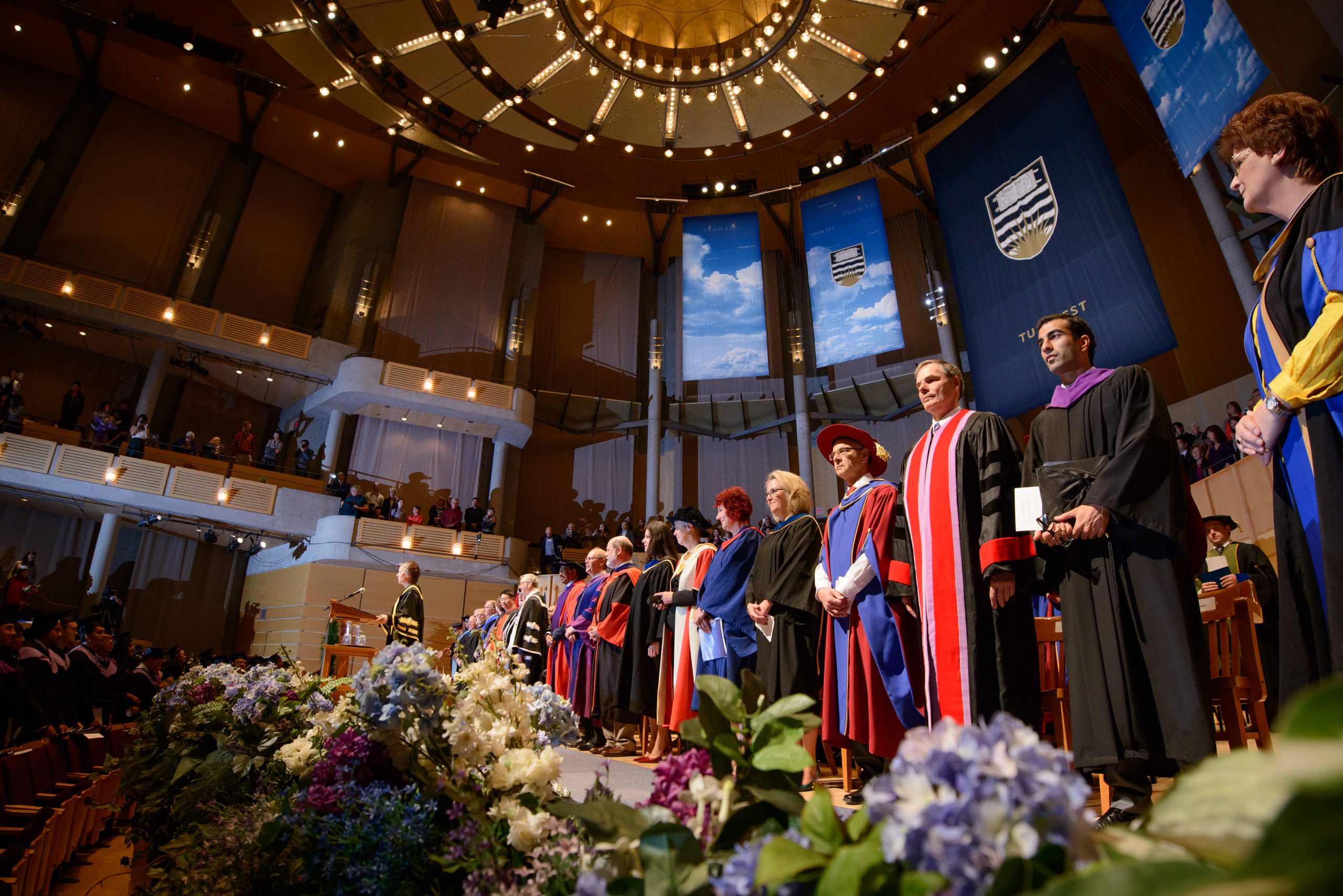
Congratulations ECE Class of 2020! We’re so proud of all you have accomplished and how much you have overcome to reach graduation day. We know you’ll shape a better world for all of us. While we may not be gathering in person, we stand with you in spirit, take pride in your achievements and share your joy.
Please find below a message from the ECE Community.
UBC’s Fall Graduation Ceremony
Fall Graduation for the Class of 2020 will be held virtually on Wednesday, November 25, 2020, at 2:30 pm. Incorporating traditions from UBC’s in-person ceremony, UBC’s 19th Chancellor will preside over the ceremony. The Honourable Steven Point (xwĕ lī qwĕl tĕl) will be officially installed as Chancellor on the morning of graduation day.
During the graduation ceremony, UBC President and Vice-Chancellor Santa J. Ono will give a live address to the Class of 2020, dressed in full academic regalia. While graduates may not be able to shake the President’s hand on-stage, they will have an opportunity to take a selfie with him—virtually, of course.
Another highlight of the 45-minute ceremony will be a keynote address from Cicely Belle Blain. A UBC Bachelor of Arts alum, Blain is a diversity and inclusion consultant, activist and writer who co-founded the Vancouver chapter of Black Lives Matter.
Please visit UBC’s Fall Graduation Ceremony website for more information.
And don’t forget to download your personalized graduation video clip. Find yours to share with friends.
Prof. Pattabiraman Receives Killam Award for Excellence in Mentoring
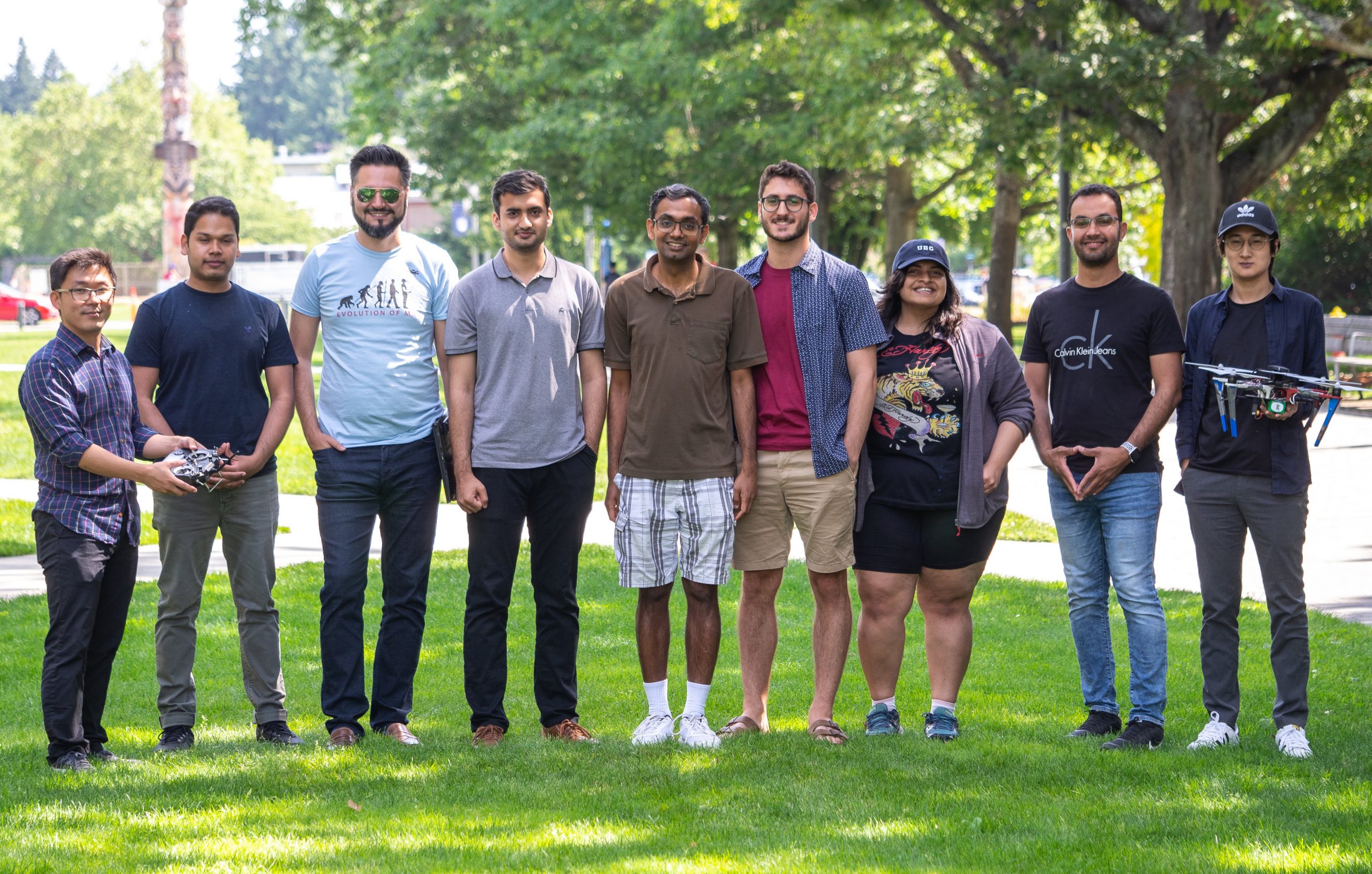
ECE professor Dr. Karthik Pattabiraman is the recipient of the 2020 Killam Award for Excellence in Mentoring in the mid-career category. The award recognizes outstanding mentorship of numerous graduate students over many years. Recipients show outstanding ability to foster the intellectual, professional, and personal development of graduate students, as well as activities that go beyond excellent research supervision, including personal development and service to the scholarly community.
Dr. Pattabiraman’s students describe him as a great coach, mentor, and supporter of their work. While all doctoral advisors are expected to teach their students how to properly conduct research, Dr. Pattabiraman never does so in a way that spoon-feeds his students. He spares no effort to cultivate his students’ potential and help bring that out. According to his mentees, he is always ready to ask the right questions and listen, showing both patience and understanding. Dr. Pattabiraman makes conscious efforts to foster a culture of respect and friendship between himself and his students, and between the students themselves. He understands the ability, passions, personality, career plan of each student, and what makes them motivated and productive. As a result, his excellent mentorship not only inspires his students to complete their degrees, but it also helps them to begin their career both in and outside of academia.
According to Prof. Pattabiraman, this award has a special place in his heart as he considers mentoring to be the aspect of his job he enjoys the most. He says of mentoring, “To me, this is the most valuable part of being a faculty member, and I am truly fortunate to be in a position to make a difference in my students’ lives. I especially value the lasting relationships that I have built with most of my students long after they graduate from UBC, and blossom in their careers.“ Many of his former students have also detailed in their letters how his mentoring has had a significant influence on their lives, and allowed them to excel in their chosen careers.
Professor Pattabiraman received his master’s degree from the University of Illinois at Urbana-Champaign (UIUC) in 2004, and his PhD in 2009. He has been at UBC since 2010, and is currently a Professor in the Department of Electrical and Computer Engineering. He also received a UBC Killam Faculty Research Fellowship in 2016, and a UBC Killam Faculty Research Prize in 2018, among other awards. His research interests are in dependable and secure computing, and software systems. He has graduated a total of 8 PhD and 20 Master’s students, and is currently supervising 7 graduate students at UBC. His students have all gone on to successful positions in both academia and industry, and they have many won prestigious awards for their research such as the William C. Carter dissertation award, the ACM SIGHPC distinguished dissertation award (honorable mention), and the SPEC Kaivalya Dixit distinguished dissertation award.
For a full list of recipients of the Killam Awards for Excellence in Mentoring, please visit UBC Graduate and Postdoctoral Studies – Killam Mentoring Citations
Meet ECE PhD Student Megha Kalia

Megha Kalia’s research aims to make Augmented Reality (AR) feasible for robot-assisted surgery. In contrast to open surgery, robot-assisted surgery can decrease the patient recovery times from months to weeks.
RESEARCH DESCRIPTION
Megha Kalia’s research aims to make Augmented Reality (AR) feasible for robot assisted surgery. In robot assisted surgery a surgeon makes minimal precise incisions by reaching inside a patient’s body using miniature instruments and a camera mounted on robotic arms. The system while providing the same dexterity as human hands enables a precise and safe surgery leading to reduced recovery time from months to weeks in comparison to open surgery. However, like open surgery, the concerns of incomplete cancer removal remain; primarily because of unclear boundaries between healthy and cancerous regions in the camera image. The boundaries, although, are visible in medical imaging data such as Magnetic Resonance Imaging (MRI), constant juggling between the MRI and the camera image, while performing surgery, is impractical. Here, Augmented Reality can help by projecting information like tumor locations, retrieved from medical data like MRI, directly on top of the organ in real-time. Based on this, the surgeon can make the most optimum incision. However, AR is not yet mainstream in robot assisted surgery because of the very low margin of errors needed and practical restrictions of safety and sterility in an operating theater. Simply put, my research is two-pronged: First part is to come up with the most accurate and real-time algorithms that need no external equipment during surgery to superimpose the tumours detected through MRI (for example) directly on the surgical camera view. The second part of my research relates more with the manner in which we display the tumour in the camera. More precisely, we need to find the balance of what is the best way of showing the tumour in the surgical camera view so that it does not create visual clutter and block the surgeon’s view itself of where to make the incision.
WHAT DOES BEING A PUBLIC SCHOLAR MEAN TO YOU?
Being a public scholar to me means to disseminate the knowledge about the current state of my research to the general public and clinicians in simple, understandable language. I believe, as a public scholar, it is my responsibility to bring researchers, like myself, clinicians and the general public on the same table and engage in broader discussions. Direct interactions will also motivate young diverse minds to pursue a career in health technology research.
IN WHAT WAYS DO YOU THINK THE PHD EXPERIENCE CAN BE RE-IMAGINED WITH THE PUBLIC SCHOLARS INITIATIVE?
In the field of health technology, I see many self-motivated PhD students working on big questions that can affect human lives in unimaginable ways. Moreover, I see research itself as a collective effort where an entire research community is taking small steps towards a greater goal. Hence the statement, “Standing on the shoulders of the giants”. However, It’s ironic that so many PhD students feel isolated, unmotivated and go through a “midlife crisis” in the middle of their PhDs. PSI can help re-imagining the whole experience where the outcome of a PhD can be much more than just a 100 pages long PhD thesis. For me, PSI can help engagement with end-users, such as clinicians, and establish partnerships to produce more meaningful and high quality research. The partnerships have allowed me to see my proposed methods in action where I don’t need to wait for years to validate their usefulness. PSI also allows and supports more cross-disciplinary research providing a test-bed to try out more creative and out -of the box ideas to solve the same old problems. PSI can also help provide a more profound PhD experience by creating a network of people striving to solve important engineering problems in the form of its many bright Public Scholars.
HOW DO YOU ENVISION CONNECTING YOUR PHD WORK WITH BROADER CAREER POSSIBILITIES?
I see my PhD as a problem-solving exercise where we are trying to make Augmented Reality a part of routine robotic surgical procedures. While coming up with novel AR methods, in addition to the usefulness of the method, we constantly ask ourselves questions pertinent to translation to a real surgery, such as, “is it feasible during surgery?” or “how much time will it take to perform the method during surgery ?”. Thus, I often find myself delving into domains such as human computer interaction, computer vision, machine learning, among others. The implementation always happens on the da Vinci surgical robot in our lab, which requires the knowledge of software and hardware alike. In the last few years, my PhD has given me the breadth of skills that I couldn’t imagine in any other professional role or position. The skillset opens broad career possibilities for me.
HOW DOES YOUR RESEARCH ENGAGE WITH THE LARGER COMMUNITY AND SOCIAL PARTNERS?
The heart of my research is to come up with methods to showcase and fuse medical data (such as MRI and Ultrasound) with surgical camera images, to see tumor margins and organ boundaries, while performing surgery, in robot-assisted surgery setup. We aim to deploy our system in real robot-assisted radical prostatectomy procedure at Vancouver General Hospital (VGH) within the next couple of years. To that end, I have been observing surgeries in the operation theater to understand the surgical procedures and surgical environment in which my proposed solutions will be used. Furthermore, one of our collaborators is a Urologist at Vancouver General Hospital (VGH), who routinely uses the da Vinci surgical robot for prostate cancer surgery. A part of my research is to receive regular feedback from him on my new proposed techniques in early stages of research to keep the proposed solutions relevant to surgery. Such one-to-one engagements with clinicians is essential but not sufficient to reach a wider community. Despite being useful, the transfer of surgical AR solutions to surgical theaters has occurred with glacial speed in the past. It is not just due to necessary demands of medical safety, but also because of fear among clinicians and the general public arising from a lack of familiarity with novel technologies. The root of this problem is that the outcome of a scholarly work, in the form of a research paper, is difficult to comprehend for non-researchers. Therefore, I have given more than 15 demos to the general public and undergraduate students to educate them about the state of surgical AR technology. I plan on delivering more public talks through various avenues, provided by PSI, about my research and the current status of surgical AR research, especially for prostate surgery.
HOW DO YOU HOPE YOUR WORK CAN MAKE A CONTRIBUTION TO THE “PUBLIC GOOD”?
“Public good” is an inherent part of my current research. In contrast to open surgery, robot-assisted surgery can decrease the patient recovery times from months to weeks. However, just like in open surgery, the incidents of positive surgical margins (PSM), indicating the occurrence of cancerous cells, after the surgery has been performed, are concerning. Oftentimes, during surgery the goal is to remove the cancerous tissue while preserving the surrounding healthy structures, for rehabilitation of the patient to a normal life after surgery. Thus, the effort to optimize this tradeoff, when the demarcation between the healthy and the cancerous regions are not clear in the camera image, can lead to PSM after surgery. In addition to the burden on the healthcare system, one can imagine the mental distress it can cause to the patients and their families. Augmented Reality can simplify the decision making by clearly showing the tumorous regions in the camera image. This information can be obtained from an MRI image and overlaid on the camera image. The current research, that aims to make AR feasible for robot-assisted surgery, can directly benefit approximately 200,000 robot-assisted cancer related surgeries and patients undergoing them, worldwide.
WHY DID YOU DECIDE TO PURSUE A GRADUATE DEGREE?
The decision to pursue a graduate degree was easy for me. I received a scholarship to spend a semester in Technical University of Munich, Germany in a lab where I worked with a well established research group, who have pioneered a lot of work in Medical Augmented Reality. My visit there was a lot of fun as I was working on such a cool project with some of the most hardworking, smart, humble and fun people. On top of it, reading research papers about human cognition and how we can integrate it with Augmented Reality applications, blew my mind. At that time PhD seemed like an extension of the fun, all while travelling around the world.
WHY DID YOU CHOOSE TO COME TO BRITISH COLUMBIA AND STUDY AT UBC?
During my stay in Munich, although things were great at work, navigating my way without knowing the German language was not easy for me. That’s why I wanted to pursue my degree in an English speaking country. Then I came to know about The Robotics and Control Lab at UBC. It is one of the very few labs in the world, where an ongoing clinical study is in place. What this means is that I don’t just get to do research like other PhDs, but get to test my methods on real data and in real robot-assisted surgeries at Vancouver General Hospital. I also actively collaborate with my colleagues at both the Technical University of Munich and UBC, thus my network also expanded. Hence, when the opportunity to pursue a PhD degree in my current lab, under the supervision of the best of supervisors and surgeons came my way, I grabbed it.
ECE Alumna Sara Badiei Shares her Career Move

Sara Badiei currently lives in Coquitlam and works as a Business Development Executive at Unity Technologies. After completing her MSc (Engineering) Sara spent several years working in the non-profit sector across the globe before changing course. Read more about how Sara made a significant career move and how she navigates change.
Tell us about your role
I build the future every day by imagining how we can use the latest advances in technology to change the way companies do their business. Unity Technologies is the world’s largest platform for creating real-time 2D and 3D content. Over half of the games downloaded from the App Store, and over 70% of Augmented and Virtual Reality experiences are built with Unity. I work with Fortune 500 companies to see how we can transform their operations through these cutting-edge technologies.
Describe a situation where you have had to navigate change in your career
For almost a decade I worked in the international development and humanitarian aid sectors with organizations like Doctors Without Borders, the Red Cross and the World Bank. I led engineering projects in some of the most difficult emergency zones in the world, including Afghanistan, Gaza, Chad, Congo and more. I loved my job but after I had my daughter my priorities changed. Having children is a pivotal point in one’s career and finding a way to balance it all is a challenge – at least at first.
What did you learn about yourself from that experience?
Initially, it was very hard because my sense of self was intimately tied to my job. I had worked so hard to get to where I was and now there was a very sharp turn in the road that made me question my identity and trajectory. The process of starting a family re-engineered my sense of self and turned me into a more balanced and selfless person. What I learned about myself was that I’m extremely resilient and versatile which has served me well again and again throughout my career.
Do you have any advice for someone who is experiencing change in their career?
Change forces you to check the direction your career is headed in and see if your roots are deep enough to weather the storm. Building vertically in one direction may allow you to become a tall tree, but if you haven’t balanced well the smallest storm will topple you over – and the higher you rose the harder you’ll fall. Having some wind blowing occasionally and making sure you use that as an opportunity to lay down more roots allows you to build higher and be more resilient in the long term.
What opportunities arose from navigating change?
I decided to change course in 2018. Between then and now (2020) I ran in a federal election and came very close to winning, then joined a small tech firm which got acquired by the world’s largest real-time content creation company. Now I work on the cutting edge of technology, dream up what the future should look like, and work with an incredible team to actually make that future happen. I never would have imagined any of this was possible back in 2018.
ECE PhD Student Receives ACM TECS Best Paper Award 2020
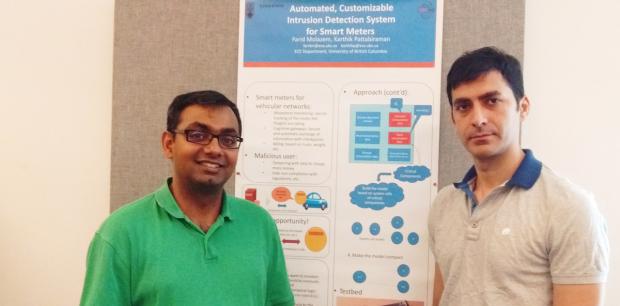
ECE Alumnus Farid Molazem (former ECE PhD Student) and Professor Dr. Karthik Pattabiraman have received the ACM TECS Best Paper Award 2020 for their paper titled “Design-Level and Code-Level Security Analysis of IoT Devices”. The award recognizes the best paper published in the ACM Transactions on Embedded Computing between January 2018 and December 2019. ACM TECS aims to present the leading work relating to the analysis, design, behaviour, and experience with embedded computing systems and is considered the top journal in the embedded computing area. Dr. Farid Molazem is now a software engineer at Google.
ECE Alumnus Farid Molazem (former ECE PhD Student) and Professor Dr. Karthik Pattabiraman have received the ACM TECS Best Paper Award 2020 for their paper titled “Design-Level and Code-Level Security Analysis of IoT Devices”. The award recognizes the best paper published in the ACM Transactions on Embedded Computing between January 2018 and December 2019. ACM TECS aims to present the leading work relating to the analysis, design, behavior, and experience with embedded computing systems, and is considered the top journal in the embedded computing area. Dr. Farid Molazem is now a software engineer at Google.
The paper analyzes the important role the Internet of Things (IoT) plays in different aspects of our lives. Smart grids, smart cars, and medical devices all incorporate IoT devices as key components. The ubiquity and criticality of these devices make them an attractive target for attackers. Therefore, techniques are needed to analyze their security, so that their potential vulnerabilities can be addressed. In this paper Dr. Molazem and Dr. Pattabiraman and introduce two techniques, one at the design-level, and the other at the code-level, to analyze security of IoT devices, and compare their effectiveness. The code-level analysis technique is able to find 3 times more attacks, and complete the analysis in half the time, compared to the design-level analysis technique, with no false positives. They demonstrate their techniques on a widely deployed IoT device, a smart electric meter, and find many real vulnerabilities in it. This work has led to significant interest from industry, and was featured by many news outlets last year.
The award was presented virtually in the Embedded System Week (ESWEEK) 2020 on Wednesday, September 2020.
Congratulations Dr. Molazem and Dr. Pattabiraman!
How You Use This One Smartphone Feature Reveals Your Age
